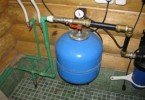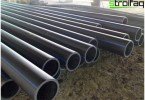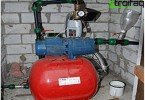Cleaning of drains
The state of the environment today, unfortunately, leaves much to be desired. This is the result of the careless use of natural resources. The human consumption of water is constantly growing, and the reserves of clean water in nature are decreasing every year. The use of detergents and various household chemicals very pollutes the wastewater of modern cities, which significantly complicates the treatment of effluents. Wastewater contains a lot of different pollutants, from mechanical components to complex chemical compounds, so wastewater treatment is a complex and multi-level process.
Content
- Wastewater treatment methods.
- Stages of wastewater treatment at wastewater treatment plants.
- Mechanical cleaning equipment.
- Biological treatment facilities.
All methods of wastewater treatment can be divided into destructive and recovery methods. The result of destructive cleaning methods will be the decomposition of complex pollutants into simple ones, they will be removed from the water in the form of gases, either precipitate or remain dissolved in water, but neutralized. The result of recovery treatment methods will be the extraction of all valuable substances from wastewater for further processing.
Wastewater treatment methods
- Mechanical;
- Biological;
- Physical and chemical;
- Wastewater disinfection;
- Thermal disposal.
1. The mechanical method is the simplest. By mechanical treatment, insoluble components polluting the water, both solid and surface grease, are removed from the wastewater. Sewage first passes through the grates, then through the sieves and sumps. Smaller components are precipitated by sand traps. Waste water treatment from oil products is carried out using grease traps and gas oil traps. An advanced method of mechanical cleaning – the membrane – is used in conjunction with traditional methods and allows for more thorough cleaning. Mechanical wastewater treatment is a preparation for biological treatment and allows removing up to 70% of impurities from domestic wastewater, and up to 95% from industrial wastewater.
2. Biological wastewater treatment is due to the life of microorganisms capable of oxidizing organic matter. The basis for the development of this method is the natural purification of rivers and reservoirs by the microflora that inhabit them. Thus, the effluents are freed from organic nitrogen and phosphorus. Biological treatment is aerobic and anaerobic.
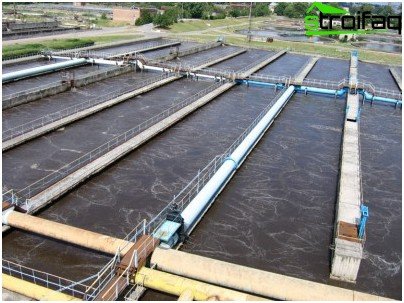
Construction for aerobic wastewater treatment due to the vital activity of bacteria
- Aerobic wastewater treatment is carried out using aerobic bacteria, for the life of which oxygen is needed. With this treatment, biofilters and aeration tanks with activated sludge are used. Aeration tanks have a high degree of purification and are more effective than biofilters for wastewater treatment. In aeration tanks, aeration of water and its deep biological treatment are performed. In addition, the result is activated sludge, which is a good fertilizer.
- Anaerobic wastewater treatment is carried out without oxygen. When exposed to anaerobic bacteria, fermentation and the conversion of organics to methane and carbon dioxide occur. For this method meta-tanks are used. Anaerobic cleaning is less expensive than aerobic cleaning, as this does not require aeration.
3. The physicochemical method includes electrolysis, coagulation and precipitation of phosphorus with iron and aluminum salts.
4. Disinfection of wastewater occurs by ultraviolet radiation, treatment with chlorine or ozonation. It is used for disinfection before discharge into water bodies..
- Ultraviolet disinfection is a more effective and safe method compared to chlorination, since it does not form harmful toxic substances. Ultraviolet radiation has a detrimental effect on almost all microorganisms and effectively destroys the causative agents of cholera, dysentery, typhoid, viral hepatitis, poliomyelitis and other diseases.
- Chlorination is based on the ability of active chlorine to disrupt microorganisms. A significant drawback of this method is the formation of chlorine-containing toxins and carcinogens.
- Ozonation – disinfection of effluents with ozone. Ozone is a gas composed of triatomic oxygen molecules, a powerful oxidizing agent that kills bacteria. This is a rather expensive disinfection method in which the release of harmful substances: aldehydes and ketones.
5. Thermal disposal is used for process wastewater when other methods are ineffective. Its essence is that sprayed effluents are disinfected in a torch of combusted fuel.
In modern wastewater treatment plants, wastewater undergoes phased treatment, while the methods described above are subsequently applied.
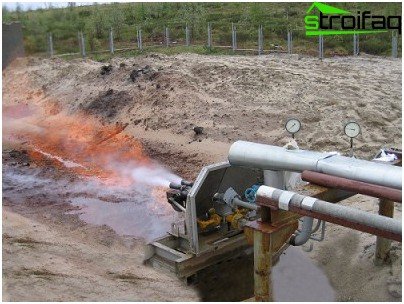
The thermal disposal of wastewater consists in the disinfection of effluents in a flame of burning fuel
Stages of wastewater treatment at wastewater treatment plants
- preliminary mechanical cleaning;
- biological treatment;
- tertiary treatment;
- disinfection.
Mechanical cleaning equipment
- gratings – square rods with openings up to 16 mm;
- sand traps (installed when cleaning more than 100m3 per day);
- averagers (set if averaging of the composition is necessary);
- sedimentation tanks (there are horizontal, vertical, radial, two-tier);
- septic tanks (used to clean drains going to filtering trenches, wells and underground filtering fields);
- hydrocyclones (needed to clean wastewater from suspended solids);
- centrifuges (emit finely dispersed substances when reagents cannot be used);
- flotation units (used for the separation of oils, fats, oil products);
- degassers (remove gases dissolved in water).
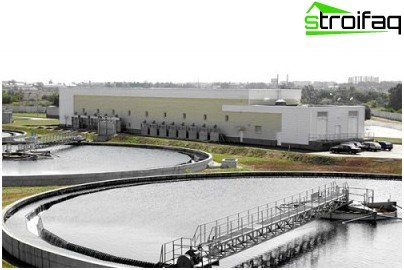
Ilosos – wastewater treatment plant with activated sludge
Biological treatment facilities
- pre-aerators and bio-coagulators (reduce the concentration of heavy metal ions and other pollutants);
- biological filters;
- aerotanks, sludge pumps, metatanks (facilities for cleaning by aerobic and anaerobic methods);
- secondary sedimentation tanks, sludge separators and filtration fields (designed for complete biological treatment of effluents);
- biological ponds (intended for deep purification of effluents containing many organic substances).
When treating wastewater, they are neutralized and filtered. Disinfection or disinfection is carried out with chlorine (requires chlorine production) or electrolysis (the construction of electrolysis plants is necessary).
As you can see, wastewater treatment is a multi-stage process that requires a scientific approach and compliance with all rules and sanitary standards. The considered methods of wastewater treatment are used in combination. The choice of method depends on the nature of the effluent, its quantity, type, and also on the concentration of pollutants.




